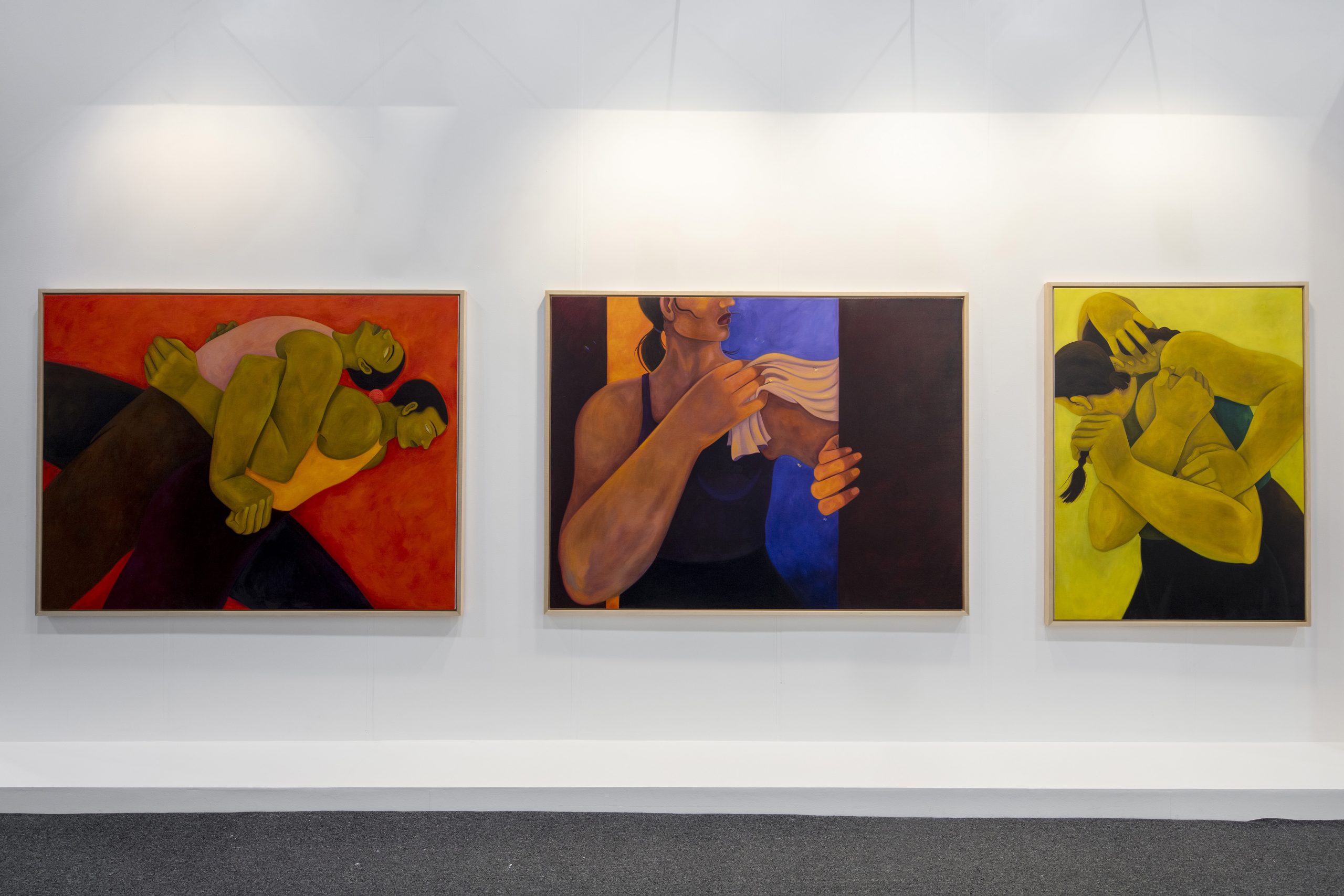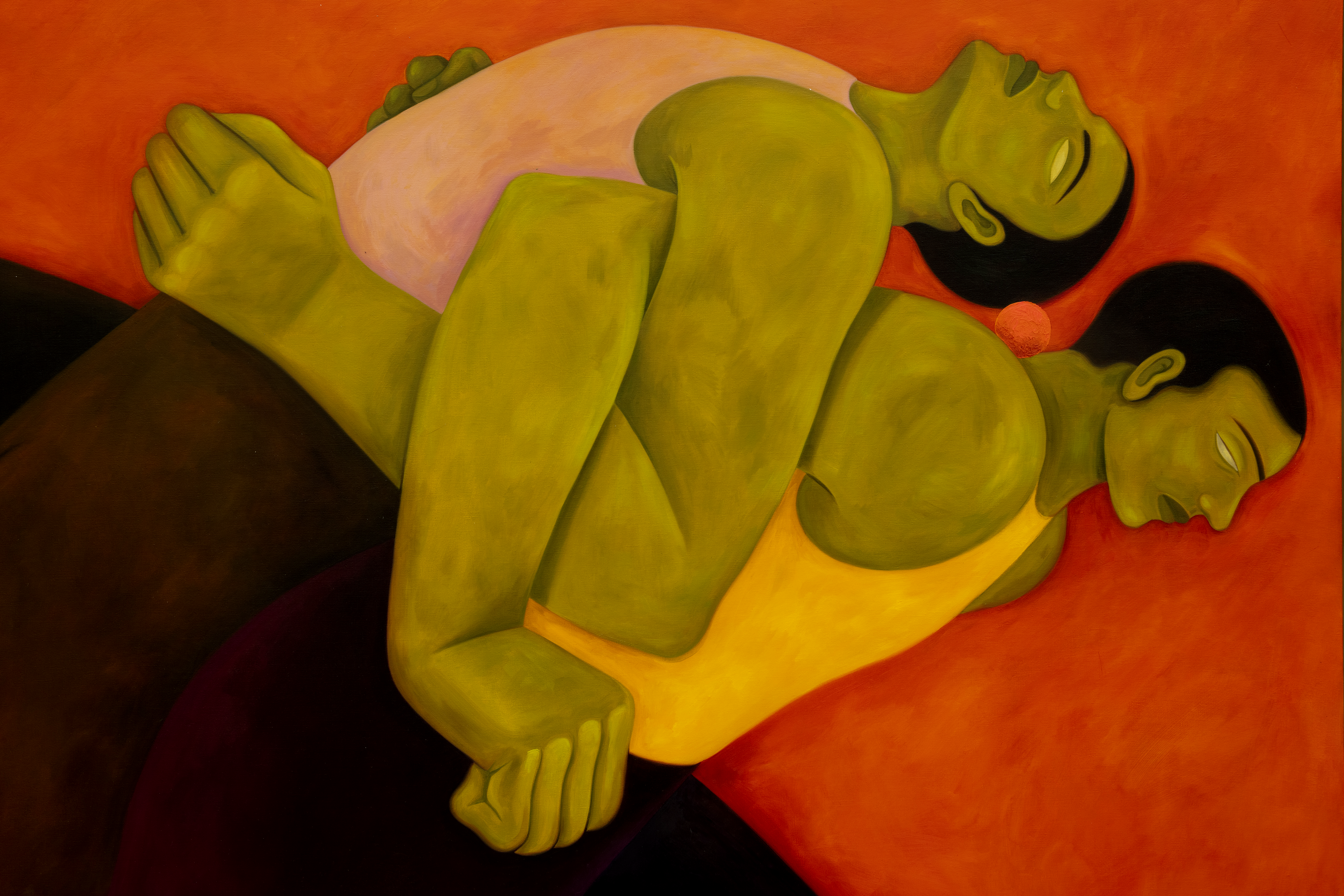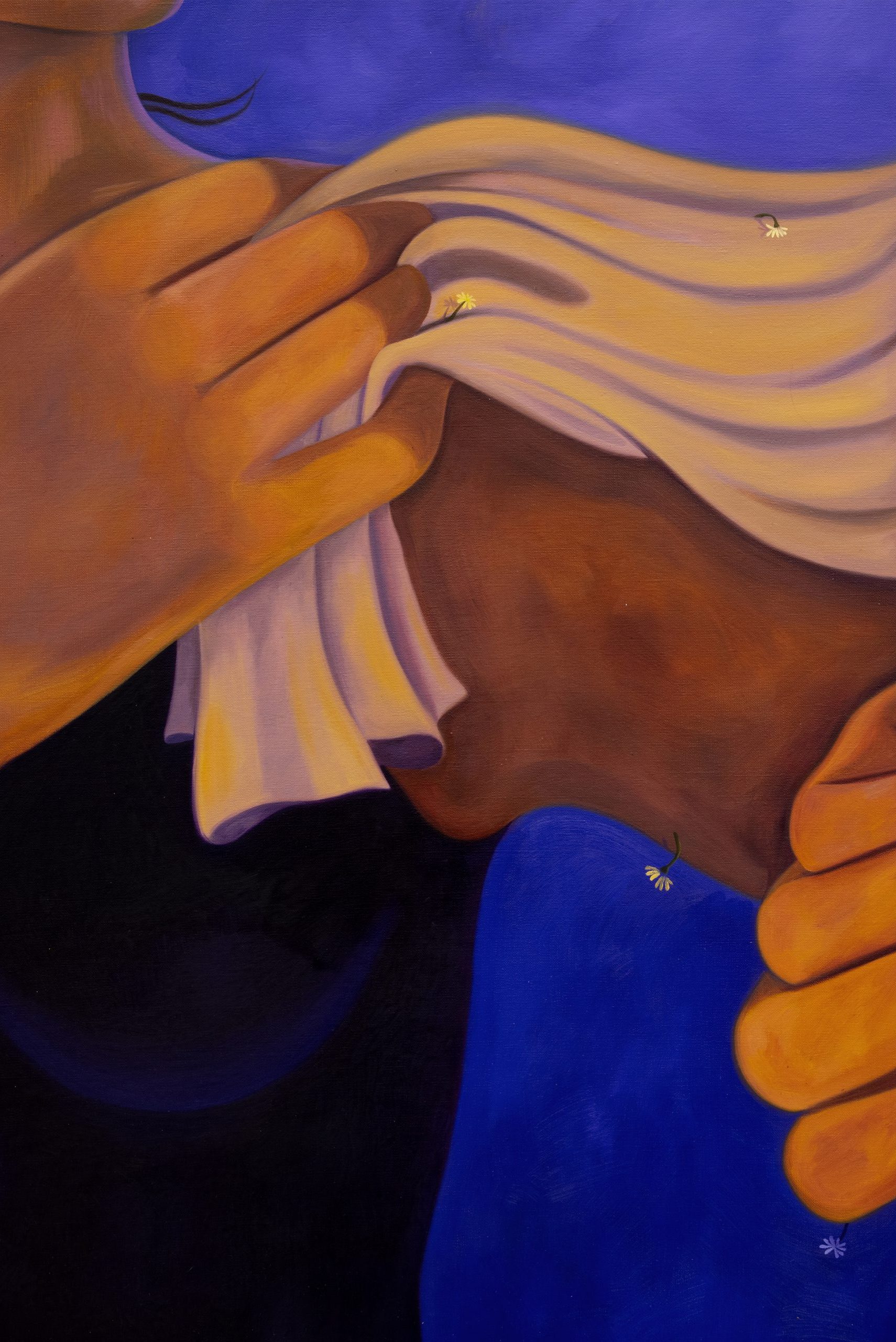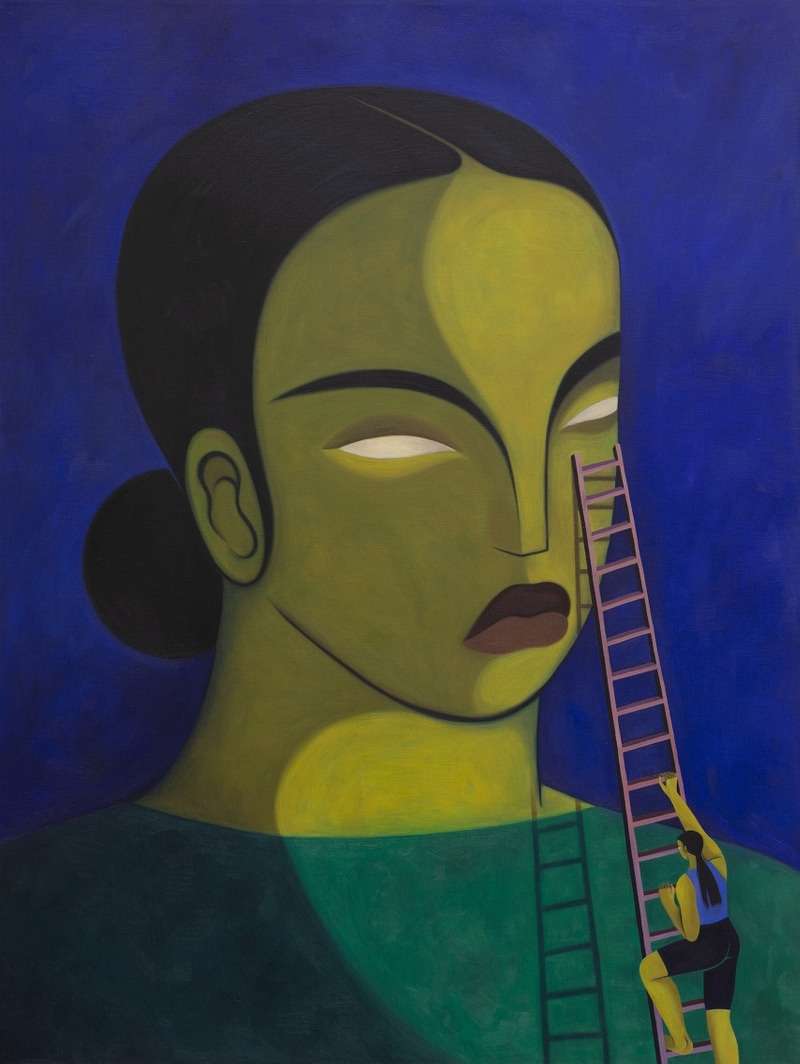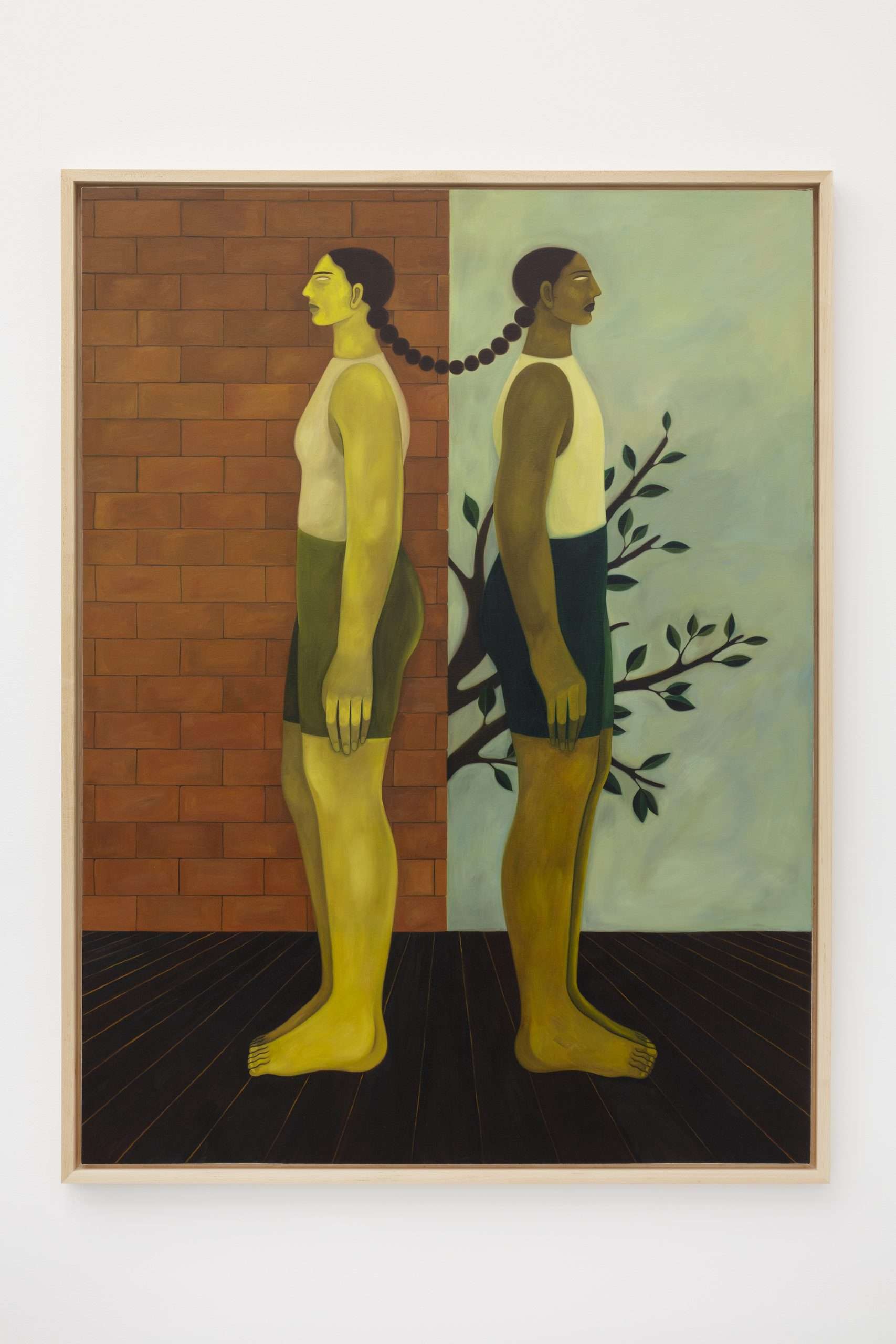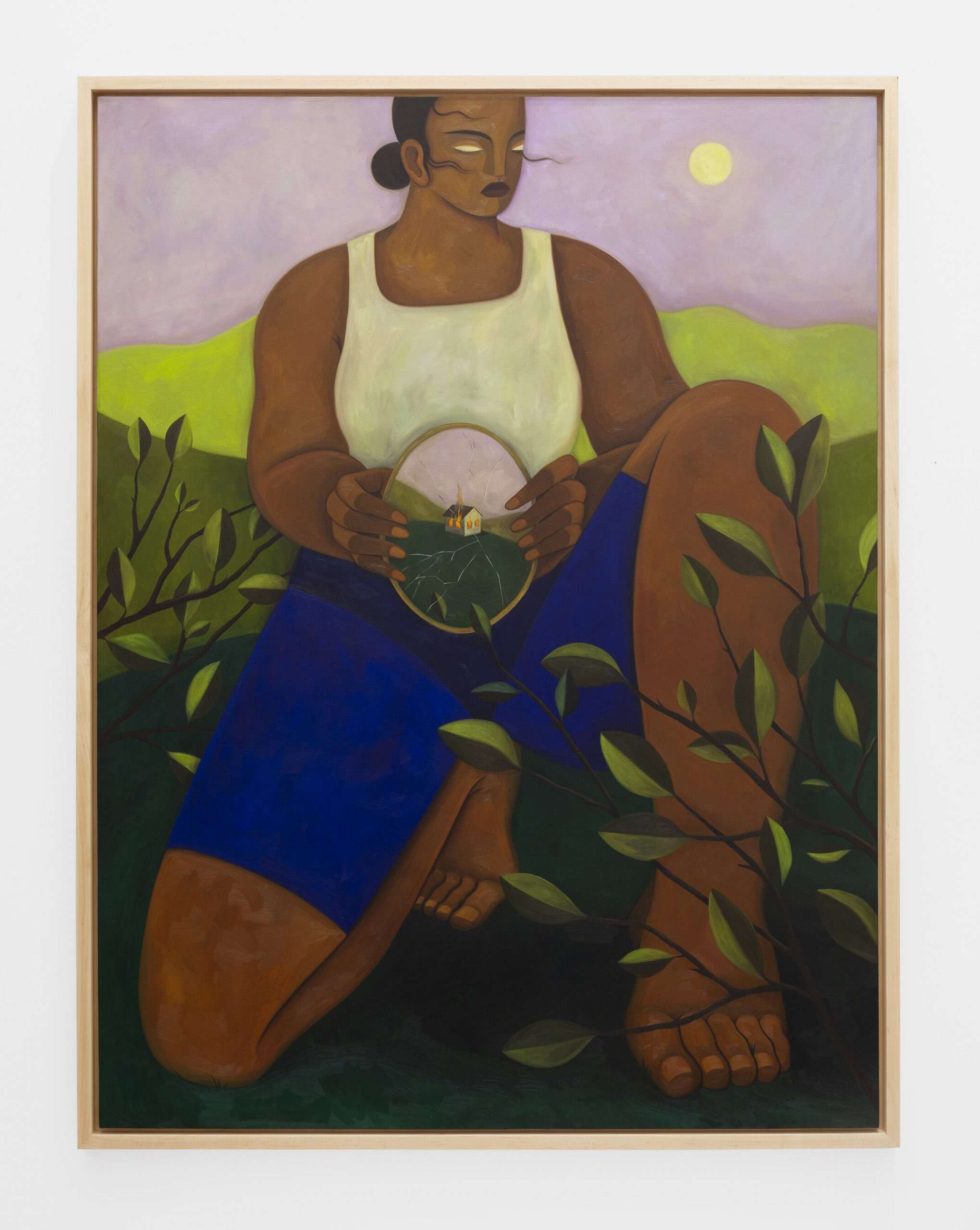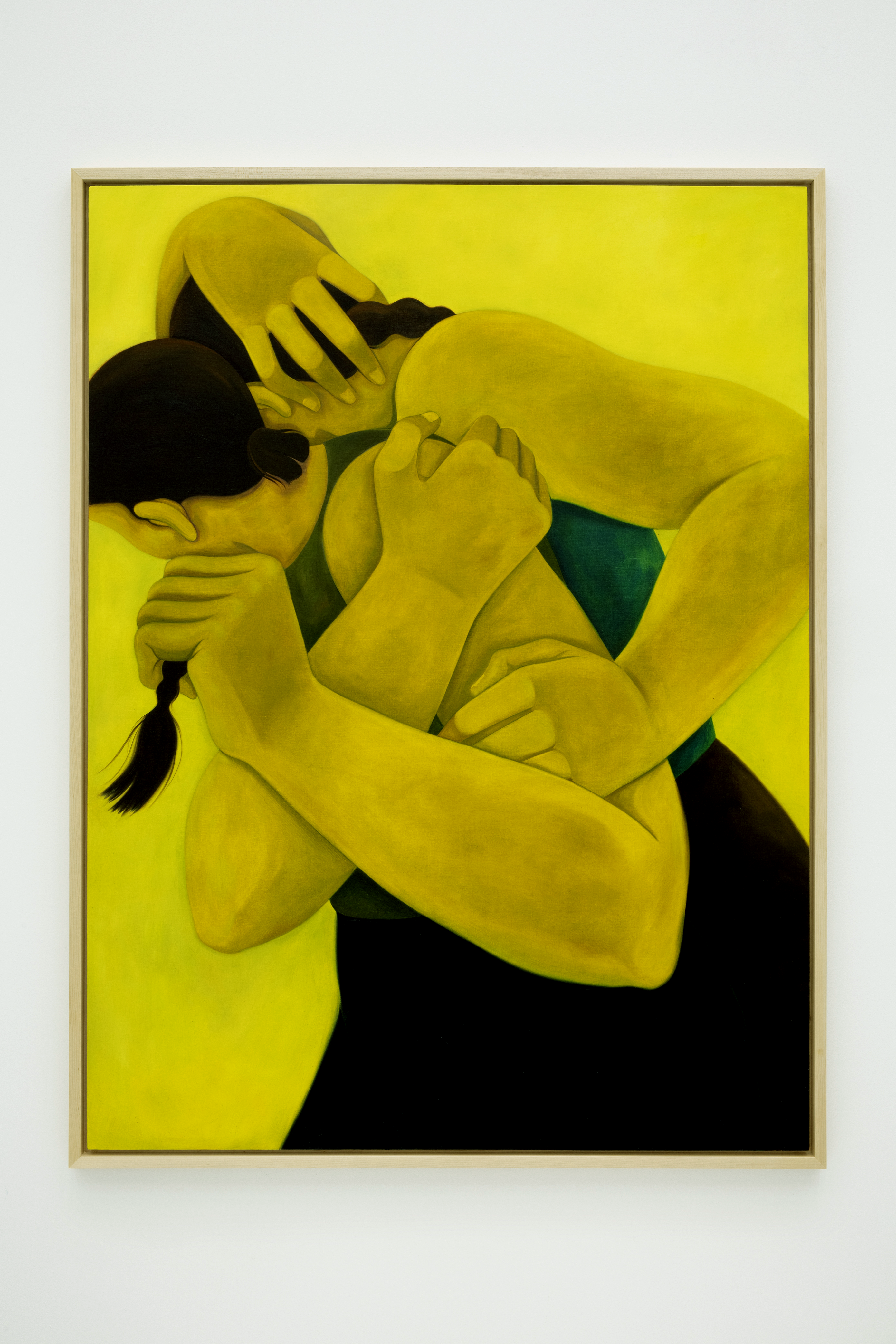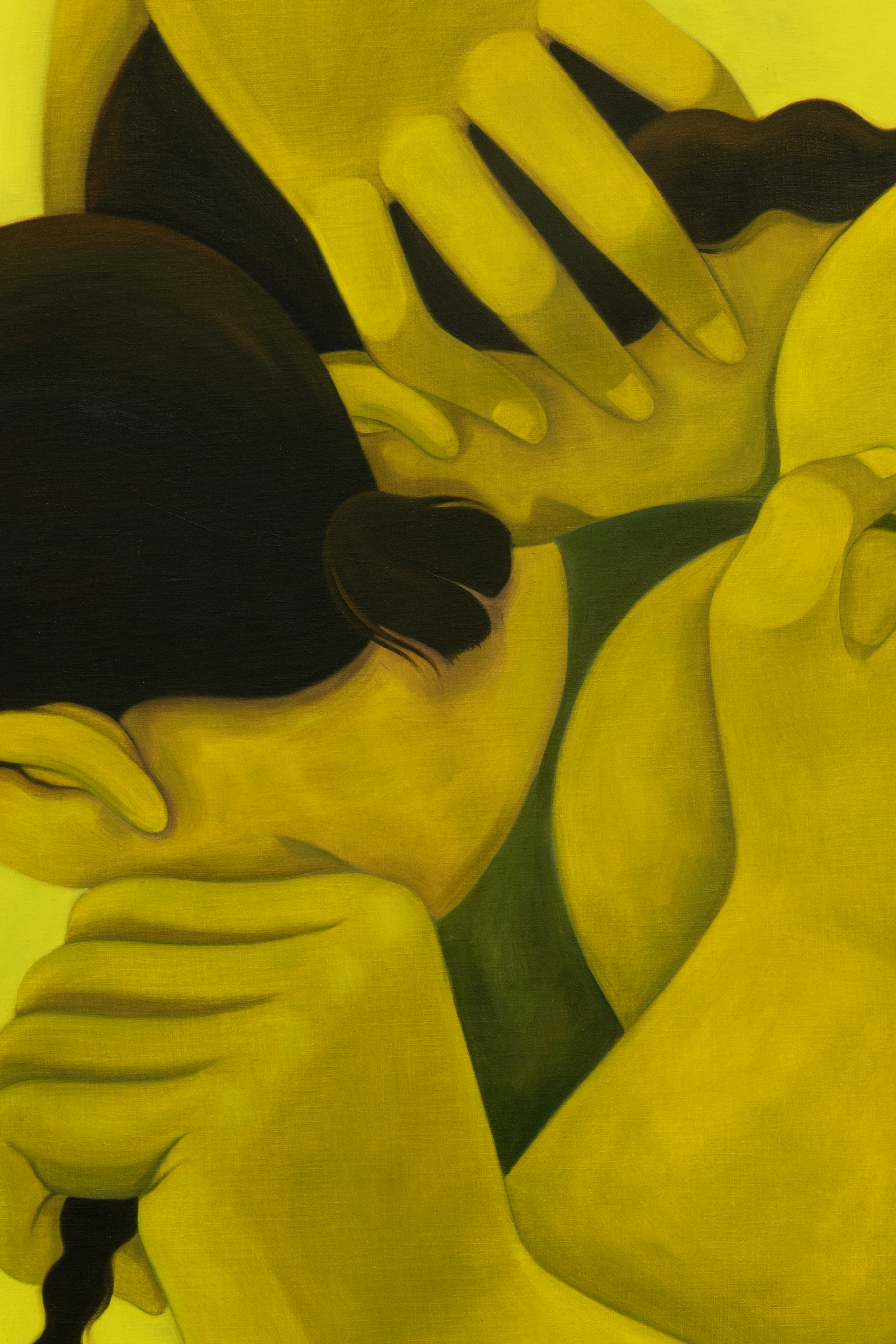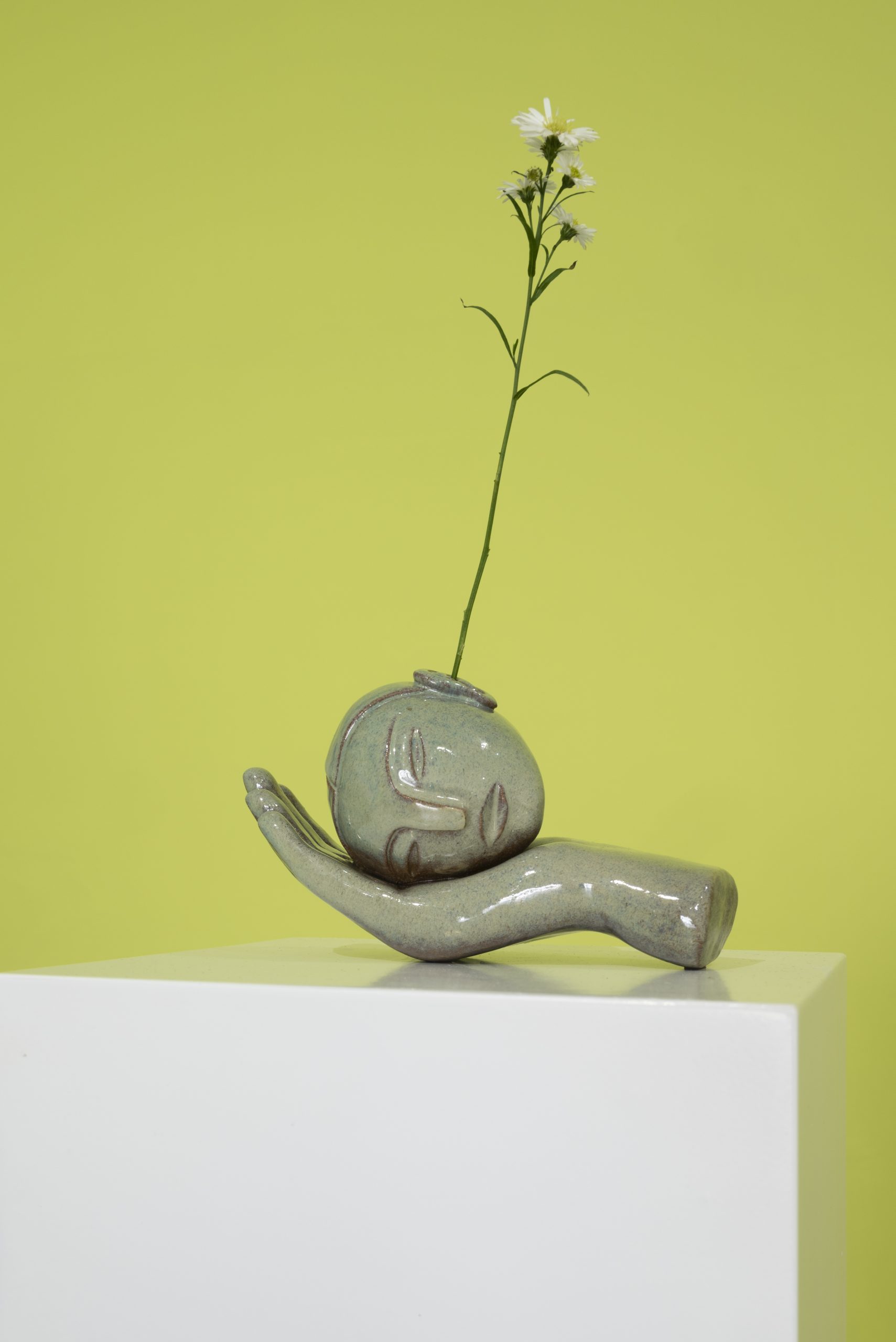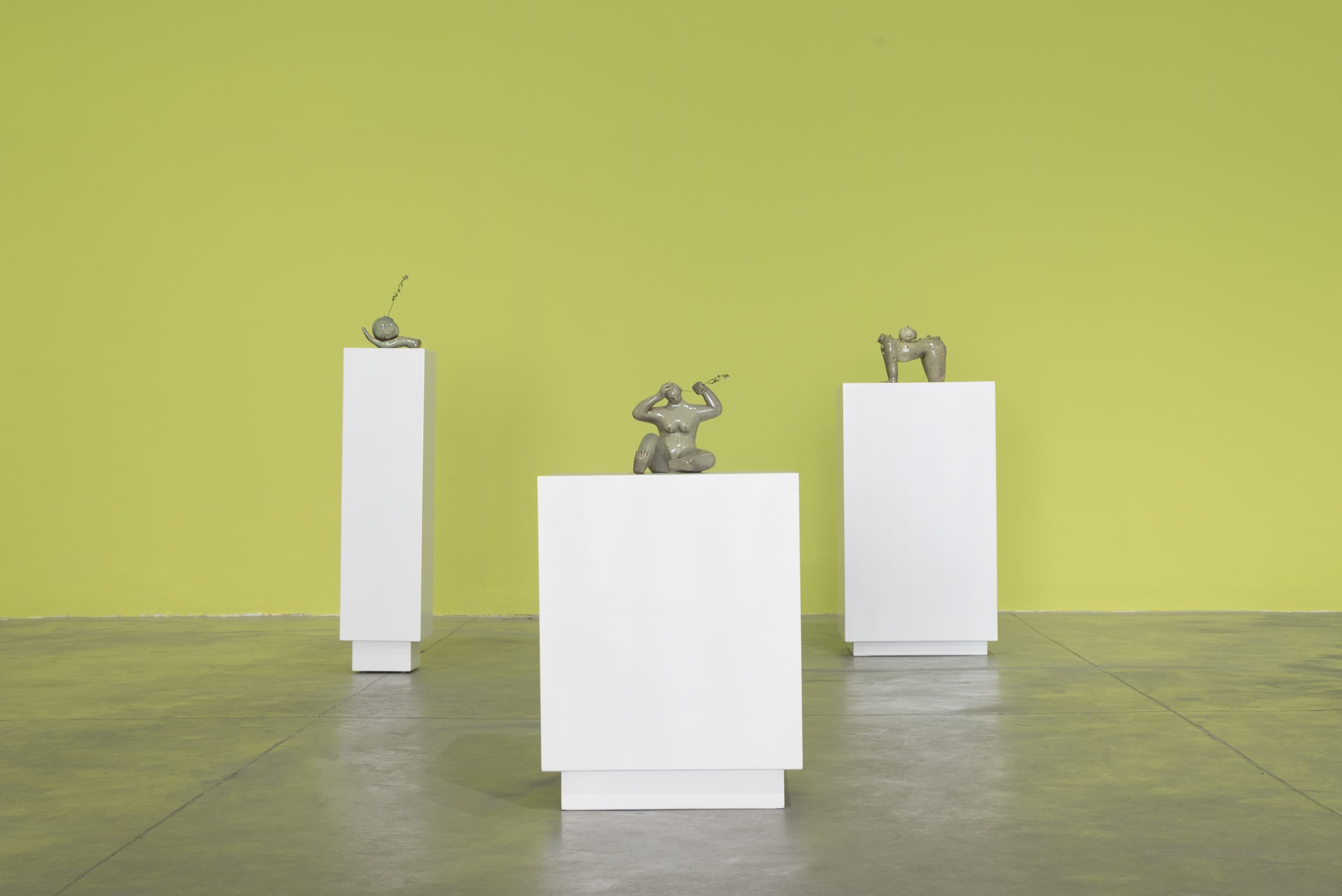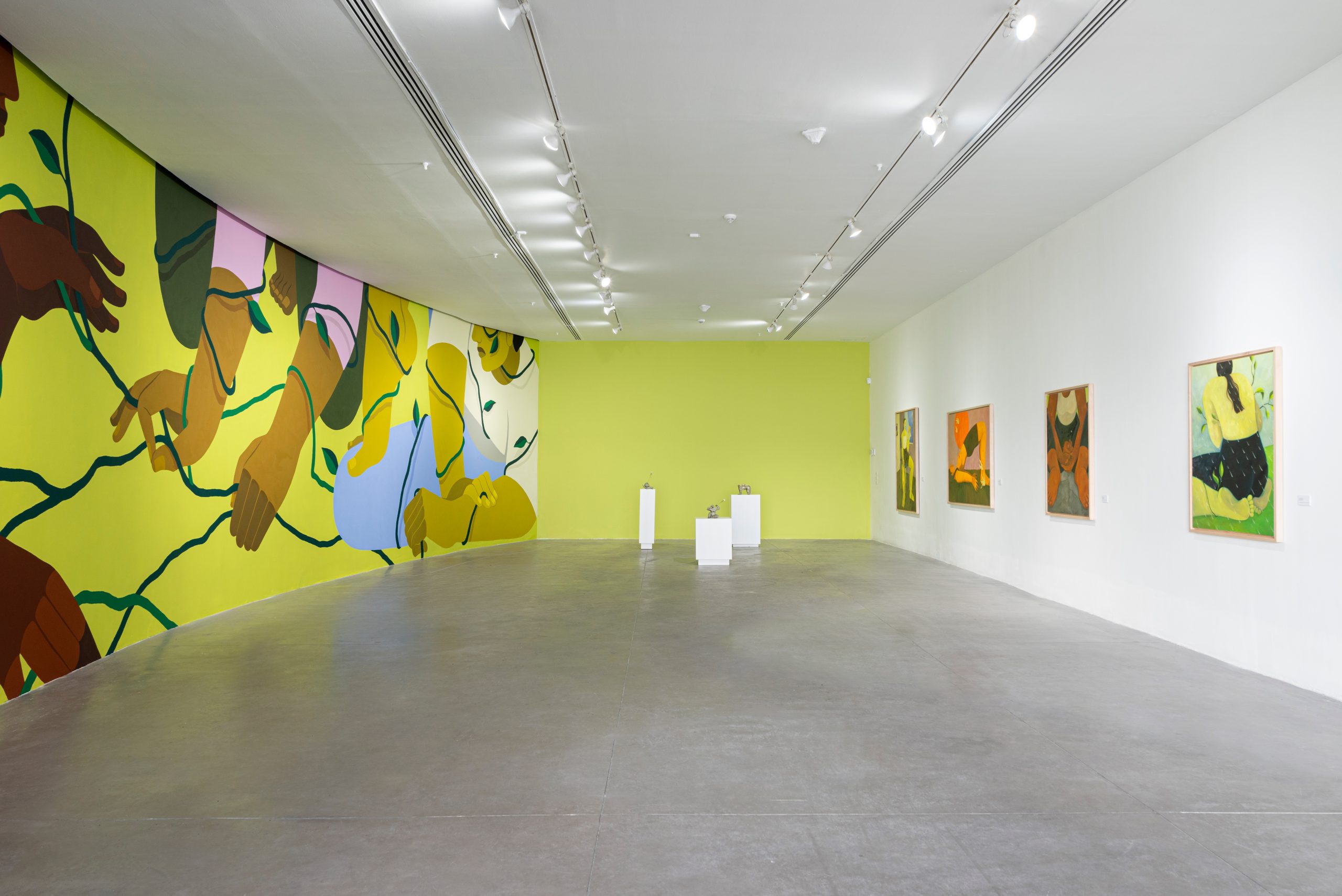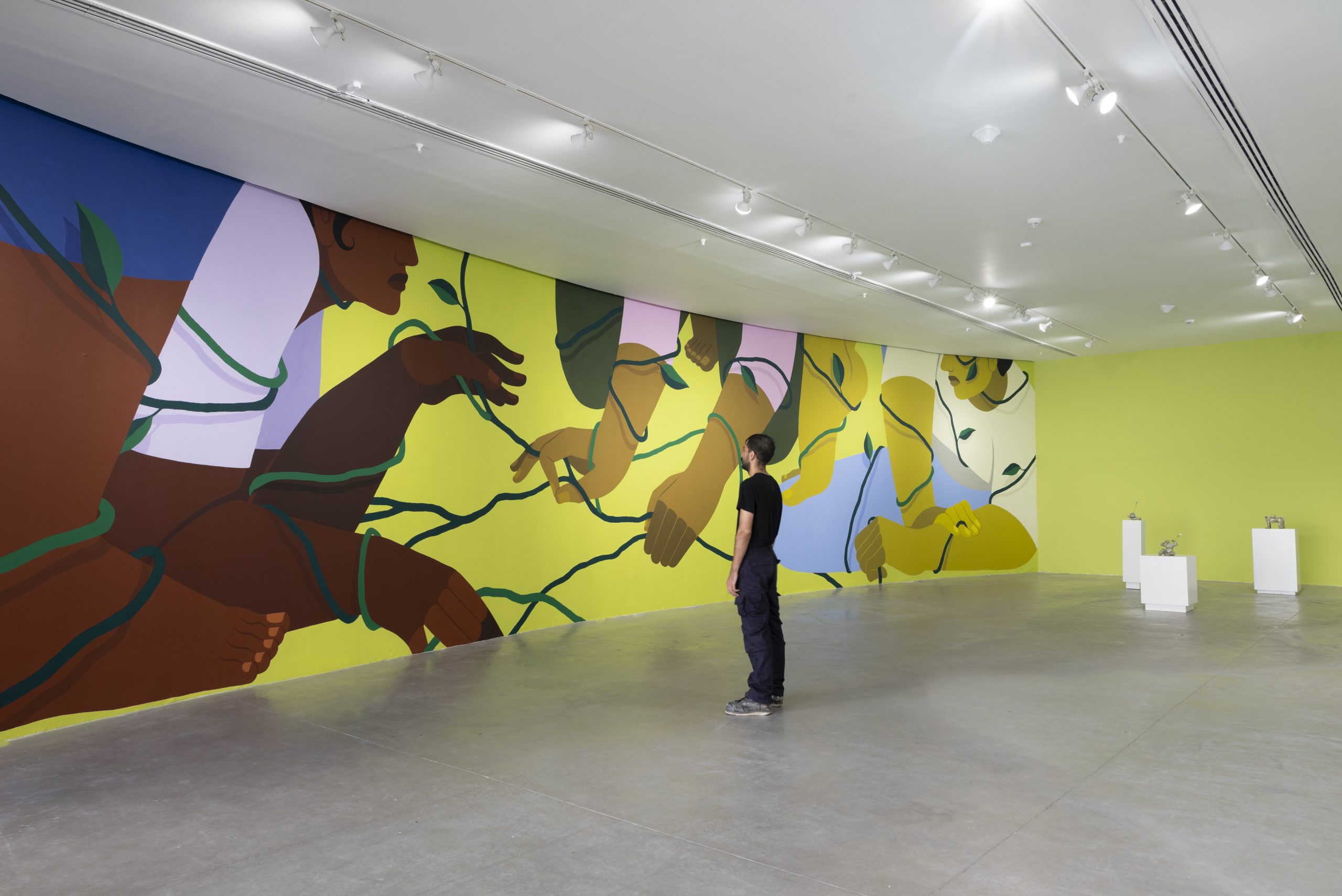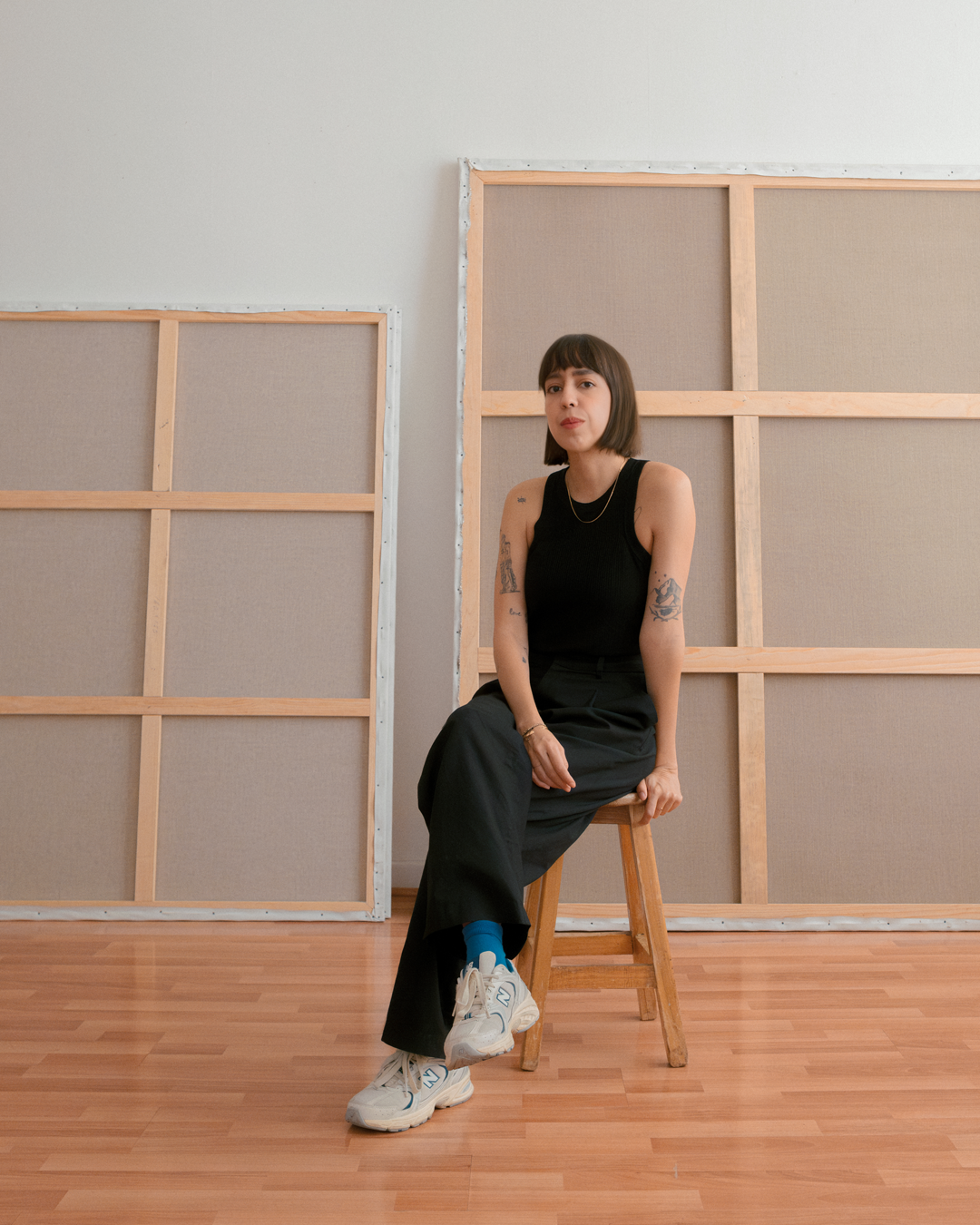
Where things happen #21— February 2024
Hilda Palafox is one of the most promising women artists emerging from the extremely vibrant Mexican art scene, meaningfully appropriating and reactivating traditional styles and motifs.
Drawing from the rich iconographic and stylistic heritage of both precolumbian aesthetics and a Mexican muralism, Palafox interestingly manipulates and shapes these into a peculiar feminine dimension and sensibility, one which deals with the perception and expression of the female body and richly stratified inner life in the society, and in Mexican society in particular.
We met with Hilda in the middle of a full art week in Mexico City. Her kind smile welcomes us from upstairs, as she waves and directs us to the right door of the building, in a very residential neighborhood not far from the Centro Historico and today’s main hubs in the city. At the time of this visit the artist has just relocated into this new studio, with tons of natural light and space, and separate rooms that allow her to differentiate the multiple aspects of her practice, and the various media this inventively traverses, always preserving a great aesthetic and semantic coherence.
Sitting in the main room are some of the new paintings she’s currently working on.
As she explains, they are off to be shown by her gallery at the forthcoming Art Basel in Hong Kong at the end of March.
Inhabiting those canvases are solely female characters, stout and solid, firm in their action and interactions with the surrounding and with the other characters. They monolithically stand in all their parts, in one of spirit and body, of mind, physical sensations, and physiological translation of these attributes. The figures appear to contemplate their gestures, sensory and emotional space, and the world, at the same time. It is as if they archive a full awareness of the deeper existential meanings, in between. Their austerity is akin to the monumentality of ancient Greek figures, but their essentiality in form, takes our mind to something even more ancient and primordial, absent of time
Contributing to this, Palafox imbues them with the specific artistic choice to leave their eyes empty, without pupils, as a void and undefined.
This component, as Hilda comments, is something she ended up choosing as a necessary means to liberate her figures from any direct reading and possibility of interpretation.
It is as Modigliani once said, “if the eyes are windows of the soul, when you enter the soul of a character, the attention could only be swift from the universal to the singularity.”
Palafox’s aim is instead that her characters, somehow, stand on a universal platform of feeling and emotional status.
With this highly symbolic mix her figures maintain a deep mystery that makes them timeless: suspended in space they escape any possibility of linear narration, and leave the reading of the scene open to the viewer, who will inevitably differently interact depending on their cultural and emotional baggage.
Again, in doing this Hilda renovates the Mexican muralists’ attitude in valuing accessibility in art to an unseen degree – which is similar to what we can find in the ancient art of the world, across regions, between religious meanings, and human stories.
From this perspective, I realize how Hilda Palafox’s work utilizes a deeply intimate but likewise universal vernacular that traverses Mexican artistic traditions that at times has crossover with post internet aesthetic, and even some Japanese influence and resonance.
With this highly symbolic mix her figures maintain a deep mystery that makes them timeless: suspended in space they escape any possibility of linear narration, and leave the reading of the scene open to the viewer, who will inevitably differently interact depending on their cultural and emotional baggage.
Again, in doing this Hilda renovates the Mexican muralists’ attitude in valuing accessibility in art to an unseen degree – which is similar to what we can find in the ancient art of the world, across regions, between religious meanings, and human stories.
From this perspective, I realize how Hilda Palafox’s work utilizes a deeply intimate but likewise universal vernacular that traverses Mexican artistic traditions that at times has crossover with post internet aesthetic, and even some Japanese influence and resonance.
On the other hand, Palafox hails from an education and early career in Illustration, the line is the real connecting element between all Palafox’s works: it’s unifying thread, it runs through the figures, outlining these enigmatic compositions. Inside those lines the density of color expands through multiple passages and layers of painting, despite the artist’s preference to retain a flatness of the final surface. The space is in the color, in its saturation and stark contrasts between areas of light and shadow.
As we can see from a series of works on paper in a separate room, drawing is still for Hilda the first and more intuitive step in the conception of her works: approaching her sketches as the Surrealist automatic drawings, this is the moment when all her unfathomable scenes manifest. As Hilda explains in our studio visit, this resourceful universe of feminine characters comes to her while translating into free drawing her recent feelings and life situations with very little rational control: following the flow of visual and sentimental association, mysterious and seemingly revelatory figures emerge on the canvas, yet interestingly denying any ethnic, cultural or historical identification.
These recurring characters in their solid traits and presence eventually have become what we can describe as Hilda Palafox’s “signature painting”— a style that is fresh and urgent and unmistakably her own.
However, as we move into the other rooms, we discover how this deep connection the artist has with painting, is finding a continuation into ceramics. Lying on a table, we can see some bas reliefs made of clay that look like some ancient representative which could have been found in Pre Columbian pyramids or other engraved stone plates adorned with ancient stories and ancestral wisdom.
As Hilda explains, the process with clay is for her even more intuitive: you just release yourself into the material, let the material guide you until you lose yourself into it, and lose the distance and perception of detachment from the elements.
Hilda has already explored ceramics with residencies first in Japan, then at Ceramica Suro, in Guadalajara, Mexico. Over the course of our conversation she eventually confesses how she’s now aspiring for bigger scale clay sculptures in the next future, even reaching the human scale or exceeding it, to allow a different relation with the viewer and expand these narrations into the space. She’s still experimenting on how to deal and manipulate ceramics into forms, but there’s a vast universe of expressive potential in this material which she would love to explore more in depth.
From these words you can understand how Hilda Palafox is not only an incredibly resourceful artist, but also an incredibly ambitious one, looking to explore the depths of the different potential developments of her rich visual universe and narration, across multiple mediums.
Furthermore, her practice seems to be ruled by a rigorous sense of discipline: when she is asked about her routine, for instance, she describes a precise rhythm beginning in the early morning, to first prepare for the creation on both a spiritual and physical level, and then leading to her studio practice, everyday, as a sort of ritual.
The art of Hilda Palafox consequently is tapping into a visual language so much closer to the mechanisms of the myth: symbolic figures stand in for shared human attitudes and behaviors, while allowing something from the collective unconscious to emerge. As in the ancient myths, Palafox’s visual language is not just quaint stories from ancient cultures— it’s a coded instruction manual for how to balance the patterns of the human and cosmos with the energies within.
If humans have used myths to convey the eternal struggle of mankind, constantly progressing and regressing throughout time, and then Mexican Muralist, as before Frescos painters, used the same symbolic mechanisms, in her visual vocabulary Hilda expresses a similar pendular movement specifically in the woman’s experience of the world, through ages, social, and cultural changes – with many still to be archived, especially in the Mexican society.






















